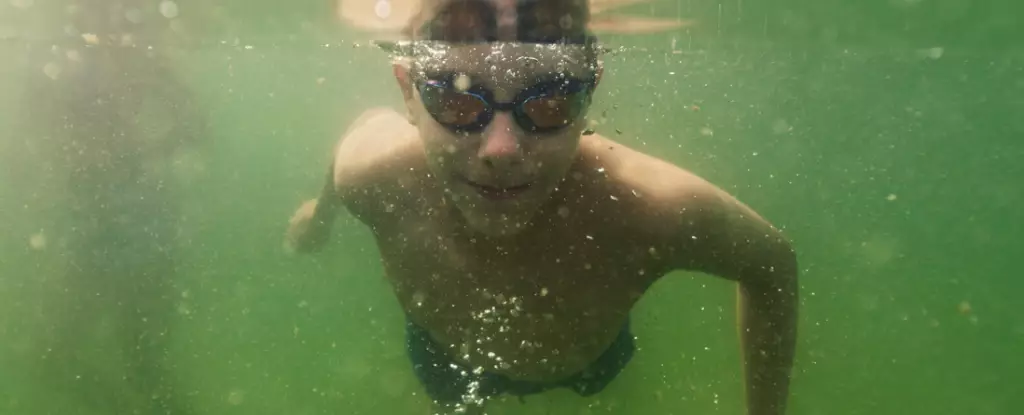As the summer heat intensifies, many individuals and families flock to local beaches, lakes, rivers, or pools for a refreshing escape. While these freshwater environments can provide a delightful way to cool off or engage in recreational activities, they also harbor significant health risks that should not be overlooked. Among these dangers is a rare but deadly organism—Naegleria fowleri, commonly referred to as the “brain-eating amoeba.” This article aims to shed light on the specifics of this organism, its effects, and the preventive measures swimmers should consider when enjoying freshwater bodies.
Naegleria fowleri is a single-celled amoeba found naturally in warm freshwater environments, such as hot springs, lakes, rivers, and poorly maintained pools. Although its association with fatal infections might suggest otherwise, the presence of this organism is not an indication of pollution or poor hygiene. First identified in the 1960s following a series of unexplained meningitis-related deaths, Naegleria fowleri has since been recognized for its potential lethality. It is important to note, however, that infections are exceedingly rare, making the overall risk of encountering this pathogen very low.
Most infections occur post-water exposure when contaminated water enters a person’s nasal passages. This extraordinary pathway of infection distinguishes Naegleria fowleri from many other pathogens, which often enter the body through ingestion. Instead, Naegleria can invade brain tissue if individuals immerse their heads underwater or engage in activities that increase the likelihood of water entering through the nose. With a staggering mortality rate of around 97.5% among identified cases in the U.S. since tracking began, the dangers posed by this organism are grave.
Understanding the environmental conditions that favor the survival of Naegleria fowleri is crucial in assessing risks associated with freshwater swimming. This amoeba thrives in elevated water temperatures, particularly between 25°C to 40°C (77°F to 104°F), making it common in warm climates. While many may presume that swimming in colder freshwater bodies minimizes risk, it is vital to recognize that Naegleria fowleri can still surface in unusually warm conditions, such as those found in heated pools or geothermal springs. Notably, past tragic incidents involving the amoeba have occurred in places like the renowned Roman baths in Bath, England.
As outdoor enthusiasts prepare for a day of picnicking by the lakeside or diving into rivers, awareness of water temperatures is essential. Parents supervising children engaged in vigorous play should remain vigilant, given that young swimmers may inadvertently expose themselves to risk. The likelihood of water splashing up the nose is higher in children due to their playful nature, thus increasing their vulnerability.
Infection by Naegleria fowleri manifests through a range of early symptoms, including severe headaches, fever, nausea, and neck stiffness. These indicators can develop within mere days after exposure, making early detection imperative. Medical professionals emphasize that individuals experiencing such symptoms shortly after potential exposure to contaminated water sources should seek immediate medical attention. Though treatments have not proven consistently effective against the pathogen, timely care can offer the slim chances of survival that a few individuals have managed to achieve in historically rare instances.
In the context of a swimming season, it is critical not to let the rarity of infections lead to complacency. Ongoing education about the signs and symptoms of this infection is essential, particularly for parents and guardians who bring children to natural water bodies. Depending on the local area, public health authorities often issue advisories concerning water safety, and it’s wise to heed these guidelines.
Despite the alarming undertones associated with Naegleria fowleri, there are steps swimmers can take to mitigate risks effectively. While swimming in freshwater is by no means off-limits, particular precautions should be observed. It’s advisable to keep the head above water and avoid activities such as diving that greatly increase nose exposure.
If individuals prefer swimming in freshwater sources, ensure that these locations are well-maintained and adhere to health regulations. Pool environments that are properly chlorinated and filtered are generally safe for swimming, as chlorine effectively eradicates Naegleria fowleri. Moreover, parents should supervise children closely and educate them about the importance of keeping their heads above water.
Enjoying fresh water during the hot, summer months can undoubtedly be a source of joy and relief. However, remaining informed and vigilant about organisms like Naegleria fowleri is crucial in ensuring that our aquatic activities are both safe and enjoyable. By taking prudent precautions, swimmers can embrace the summer sun while keeping their health intact.

